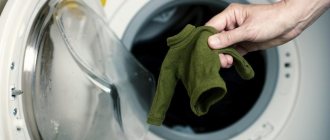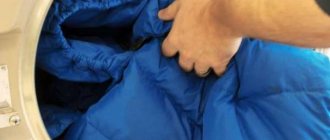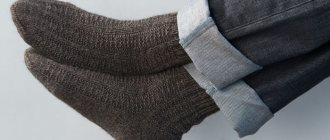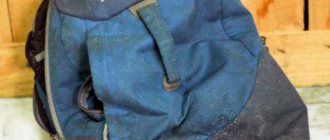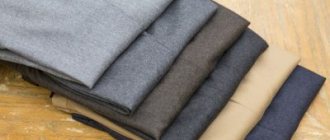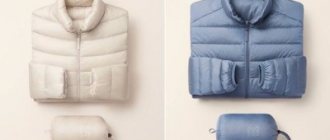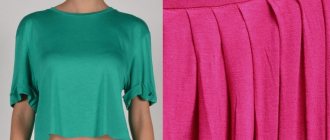Most backpacks are made from nylon. They can be safely washed in a washing machine, except for those backpacks that have a waterproof layer or impregnation. By feeling the material from which your hiking bag is made, you can determine the presence of such a layer. If one side (usually the inside) is smooth and the other is not, this means your backpack has a waterproof layer. Backpacks with a waterproof coating should be hand washed following the instructions below and should not be dried using heat.
Where to begin?
Start by completely emptying your backpack. Feel all the corners of the pockets and compartments - pull out everything you find in them. If there is a lot of dust and debris in your pockets, vacuum them. Look inside (in the main compartment or in the pockets) for a label with washing instructions for your backpack.
How to wash a backpack in the washing machine
- Unzip all zippers on the backpack, as they may be damaged if washed closed.
- Check that all buckles and straps are secure.
- If you have a top-loading washing machine, place the backpack in a laundry bag or pillowcase - this will keep the straps from getting tangled.
- If your backpacking bag has an internal frame, remove it. The frame may become bent or damaged in the washing machine and may tear the fabric.
- Inspect the backpack thoroughly, checking for any stains, tears or fraying of the fabric. If you find a frayed area, use the backpack's hand-washing instructions as washing the bag will cause further wear on the damaged area.
- Remove or pre-treat any dirty stains.
- Wash the backpack using cold water and the delicate program. If the backpack is very large, take it to the laundromat (they have large washing machines) or hand wash it in the bathtub.
- Hang your backpack over the bathtub to allow water to run off so it can dry.
Proper drying
Drying is carried out in a vertical position. Turn the washed backpack inside out and secure it to coat hangers and place it in an area with good air flow. When the lining is dry, turn the product right side out and leave to dry.
Some types of textile backpacks can be ironed, a label inside will tell you this. Be sure to follow the recommended temperature conditions and iron through a cotton cloth to avoid leaving shiny marks on the surface.
Backpacks made of leatherette, genuine leather, and impregnated materials are prohibited from being dried on the fireplace.
How to wash a backpack by hand
- Fill a bucket or tub with enough water to completely cover your backpack.
- Add laundry detergent to the water and stir vigorously by hand.
- If your backpack has an internal frame, it's best to pull it out. Although hand washing is a fairly gentle process and the frame tubes will not tear the fabric, the metal can begin to rust from excessive exposure to water.
- Place the backpack in the water and gently swirl it around to wet all sides.
- If there are any particularly dirty areas, scrub them with an old toothbrush or clothes brush.
- Rinse your backpack thoroughly in the shower.
- Hang your backpack over the bathtub to allow water to run off so it can dry.
Preparing for washing: removing stains
To prevent the item from acquiring a worn-out appearance, all possible contamination is cleaned as quickly as possible. Otherwise, they penetrate deeply into the fabric fibers and over time it will be almost impossible to get rid of them.
Now there are many industrial products, sprays and foams that are designed taking into account the characteristics of the material and easily remove all types of stains. But first, let's look at common methods that have proven themselves well.
Grease and heavy soiling
- Salt. Such marks must be reduced as much as possible before immersion in water. To do this, they are covered with an arbitrary amount of salt, lightly massaged in a circle so that the particles penetrate into the material, and left for 1-2 hours. After this, the excess should be removed with a soft brush and the product should be rinsed.
- Sugar. Apply onto the stain and leave on for 15 minutes. Gently rub in for better effect and leave again for the same time.
- Dentifrice. Before use, place the item on the table, sprinkle a substance (talc, powder) onto the stain, cover it with a clean white cloth and iron it with a warm iron. After this, leave it in this position overnight and rinse thoroughly.
- Bread crumb. Fresh marks should be soaked with a soft part and washed in the usual way.
- Fairy. The product is applied to the fingers and carefully rubbed into the fabric. Leave for 10 minutes and wash or remove with a sponge and soap solution or clean water.
- Starch, powder. The selected product is applied to the dirt for several hours, the excess is shaken off, watered with dishwashing liquid with the function of dissolving fat and washed using an approved method.
- Gas for lighters. It is sprayed onto the dirty area and left for 20 minutes. Wash off with warm liquid and air dry.
- Ammonia. It removes old grease stains and recent dirt well. It is applied using a piece of cotton wool. Leave it to absorb a little and wash as usual.
Caution: before use, the gas is tested on an inconspicuous area of the fabric and only then the contaminants are treated.
Ink
- Ammonia, alcohol, vodka. A small piece of cotton wool or a cosmetic disc should be moistened with the product and gradually rub off the mark. The procedure may need to be repeated several times. If you are dealing with old stains, then leave the damp sponge on the stain for 15-25 minutes.
- Milk, lemon. Pour a little juice or warm product onto the contaminated area, wait 1/4 hour and wipe with a sponge soaked in soapy water.
- Alcohol and acetone. A 1:1 mixture removes dirt from cotton-based backpacks well. It should be heated and soaked into the blot. Cover with a wet cloth and use a hot iron. Then wash according to the instructions.
- Bulk substances. A completely fresh mark can be covered with starch, talcum powder or pure white chalk powder. Any of them is poured for 10-15 minutes, after which it is removed dry or wet.
- Soda. Works well and gently on delicate fabrics. A paste is made from it and water, applied to the stain for 10 minutes and rinsed or removed with a sponge and soapy water.
- Glycerol. It is applied to the stain, left for 2 hours and washed off with slightly salted (1 tsp per 1 cup of water) liquid, soap mixture and wiped dry with a soft cloth.
Chewing gum or plasticine
- Ice. Sticky gum can be easily separated when it freezes. But if you are faced with a bulky hiking backpack, loading it into the freezer is not possible. Therefore, cleaning is easier: place a piece of ice on the contaminated area. Usually, 10-15 minutes are enough for the mass to freeze enough and easily move away from the fabric.
- Nail polish remover without acetone. If you rub the rubber band with it, it will come off easily.
- Spray. Chewing Gum Removers are similar in action to ice. It also freezes the mass, which is then easily peeled off
- Gum. An unusual method is as follows: you need to chew new gum thoroughly, stick it warm to the area of contamination and tear it off.
- Vinegar. The method works on denim. It is necessary to warm up a little liquid and, dipping a soft toothbrush into it, wash the gum.
- Hair dryer. With a dirt dryer, you need to heat it up and clean it using the edge of a credit card or a toothbrush.
- Saddle soap. Chewing gum can be removed from leather products in this way. A little soap suds is rubbed into the stain in a circular motion, the residue is removed with a toothbrush, and the area with chewing gum or plasticine is wiped with a damp cloth.
- Scotch. A small piece should be placed with the sticky part on the chewing gum, pressed and carefully torn off. After this, it is best to lubricate the product with a special softening conditioner.
Tip: if you only have regular washing powder, a small amount of it must first be completely dissolved in water and only then pour the mixture into the detergent compartment.
How to wash a backpack in the dishwasher
Although the dishwasher can be used to wash shoes, baseball caps, and other household items, it is not recommended to wash your backpack in the dishwasher. The temperature in a dishwasher is much higher than in a washing machine - it can damage the material or cause paint to fade. Additionally, dishwashers have rotating spray arms in the work compartment, which can get caught on the straps, damaging both the backpack and the dishwasher. If you still want to machine wash your backpack, place it in a pillowcase or loose laundry bag. If your camp bag can fit on the top shelf, put it there. Use a non-bleach detergent and remove the backpack before the drying cycle begins. Hang your backpack over the bathtub to allow water to run off so it can dry.
Handwash
If you determine that the item can only be washed by hand, check the information on the label. Most often, the manufacturer places it along the side seam of the main compartment. It indicates the permissible temperature conditions and the possibility of using dry cleaning. If there is no such information and the fabric is unfamiliar to you, you should not wash it in water above 40°C.
- Pre-clean serious stains locally by applying a liquid product to a foam sponge and rubbing into the stain.
- Pour hot water into a large basin and dissolve the detergent, whipping up a voluminous foam. You can wash your travel backpack directly in the bath.
- Place in water for 3-4 minutes and gently scrub the surface with a rag or sponge.
- Rinse under running water. It is necessary to rinse until the water becomes completely clear.
- The school bag does not need to be completely soaked. Turn the lining inside out and wash it in soapy water; wipe the upper part with a damp cloth.
How to wash a polyester backpack
Polyester is a very versatile fabric that is generally strong and durable, regardless of whether it is thick or not. If your backpack does not have any special embellishments such as studs, studs or leather trim, it can be safely machine washed using cold water on the delicate cycle. However, polyester is also known for absorbing and storing body odors, so give your backpacking bag a sniff and, if necessary, treat the back and straps using the "how to wash backpack straps" method below.
Disinfecting a backpack
To treat the product against fungus, use disinfectant sprays or wipes in ready-made form. When choosing a disinfectant, be sure to consider the activity of the active substance. It may have: fungicidal, bactericidal, virucidal, tuberculocidal or other effects. Based on your needs: since sports items can become a source of fungus, choose a fungicidal agent. The method of use will be indicated in the instructions: wiping, irrigation, soaking or another.
How to wash backpack straps
The straps and straps of a backpack collect the most sweat and dirt because they are in constant contact with your hands. They can be washed separately periodically, which will reduce the overall wear and tear on the backpack fabric and increase its service life.
- Mix a small amount of dishwashing liquid or shampoo with water, then stir the water vigorously to create a lather.
- Using a toothbrush or clothing brush, apply the resulting foam to the belts and scrub thoroughly.
- Rinse the belts under the tap, or wipe them with a little water. If your belts have filling inside, try not to get them completely wet, otherwise they will take much longer to dry.
- To help the straps dry quickly, hang the backpack outdoors.
Proper drying
The backpack is dried in a well-ventilated area or outside. It is prohibited to use hair dryers or heating devices for drying.
If there is a risk that the backpack will change its shape when hanging, then while drying it is better to place it on a stool, which is placed in the bathroom. It is recommended to open all compartments, zippers, and pockets so that air can penetrate inside and the briefcase dries faster, but this should not be done immediately, but after most of the moisture has gone. This will avoid distortion of the zippers and the entire structure.
How to wash a backpack with leather parts
Unless otherwise stated on the care label, a backpack with leather trim or leather parts should not be completely washed to avoid getting the leather wet. Areas of fabric with dirty stains are treated separately.
- Mix a small amount of dishwashing liquid or laundry detergent with water, then stir the water vigorously to create a suds.
- Using a toothbrush or clothing brush, apply the resulting foam to dirty stains.
- Rub the brush thoroughly into the treated areas of the backpack.
- Rinse the cleaned area with a sponge and clean water.
- Dry the fabric of the backpack and then let it dry in the fresh air.
- Wash your leather parts by following the instructions in our How to Clean Genuine Leather guide.
Detergents
The choice of product depends entirely on the material of the backpack.
So, for denim, textile and backpacks made of hemp fabric, it is better to use liquid washing powders. It is better to wash tourist clothes with products for membranes and sportswear:
- Salton Sport shampoo. The liquid product allows you to carefully and effectively wash products with various combinations of materials. Suitable for viscose, microphase, elastane and stretch. Preserves the top moisture-repellent layer and the brightness of colors;
- Bionicdry for sports and membrane clothing. The manufacturer calls the main advantage of the product the careful treatment of impregnated fabrics. In addition, the liquid powder does not clog textile micropores and has antimicrobial properties. It has a fairly noticeable aroma that dissipates after a few days;
- NIKWAX Tech Wach. A universal soldier in your cleaning arsenal. It can be used to wash backpacks, awnings, tents, cases and covers made from fabrics such as Gore-Tex, Permatex and Sympa Tex. Not only removes all types of dirt, but also restores the water-repellent barrier of textiles.
Not all backpacks are washable. Manual cleaning is recommended for models made of natural and artificial leather, with embroidery, rhinestone details and designs made using the painting method, as well as tourist ones with a permanent wire frame.
How to wash a backpack with rivets
The external finishing of the backpack with metal studs and rivets gives it a unique look, but at the same time adds special care requirements. It is best to avoid getting water on metal parts as they may rust. Therefore, such backpacks cannot be washed completely; only dirty spots on them are cleaned.
- Mix a small amount of dishwashing liquid or laundry detergent with water, then stir the water vigorously to create a suds.
- Using a toothbrush or clothing brush, apply the resulting foam to dirty stains.
- Give the dirty areas of the backpack a good scrub with the brush.
- Rinse the cleaned area with a sponge and clean water.
- Dry the backpack fabric.
- Gently polish the studs and rivets with a soft, dry cloth.
Features of processing frame backpacks with an orthopedic back
Many backpack models, especially those designed for younger schoolchildren, have special seals on the back. These may include plastic and metal plates. The complex design is designed to ensure that the backpack maintains its shape.
If all these elements are removable, then they are removed before washing in the machine. Otherwise, the backpack cannot be placed in the drum.
Frame seals require careful handling. For them, spinning and twisting should be excluded.
The video will show you how to wash a frame backpack:
Removing stains
As a result of long-term use, stains and stains appear on the fabric. Before you wash a leather backpack or fabric item yourself, you need to remove all dirt. To do this, you should choose a stain remover. They are all divided into 3 types:
- Sorbents - this option is suitable for products made from natural materials. When they come into contact with contaminants, active elements destroy them from the inside. In this case, the structure of the material is not disturbed.
- Solvents – intended for synthetic fabrics. They contain alcohol, so they are effective against grease and ink.
- Oxygen-containing stain removers - suitable for removing stains on colored materials.
Contraindications for care
In order for the fabric to retain its visual appeal and strength for a long time, it is prohibited:
boil or wash things at temperatures above 40. High temperatures destroy the structure of the fibers and deform the fabric;- treat products with harsh detergents containing chlorine, various bleaches or stain removers;
- twist by hand or use high spin speeds when machine washing;
- dry in the sun, hot radiators or other heat sources.
Features of the material
Polyester is one of the most popular synthetic materials. The fabric is created by weaving the main and transverse threads. Externally, polyester resembles wool, but its characteristics are very similar to cotton.
Polyester synthetic fabric is different:
long service life - not subject to abrasion, mechanical stress, stretching;- resistance to the absorption of dirt and odors - the special structure of the surface of the fibers does not allow dirt to penetrate and accumulate inside the fabric;
- low creasing - fabric fibers are practically not deformed during washing and drying. Quickly release moisture, forming a smooth surface;
- color fastness - does not fade, tolerates repeated washing, does not fade when exposed to sunlight;
- moisture, wind and cold resistance - the material does not get wet and retains heat well;
- ease of care - if washing recommendations are followed correctly, items made of polyester retain their beautiful appearance for a long time;
- immunity to the effects of aggressive chemicals, the development of bacteria and microorganisms.
